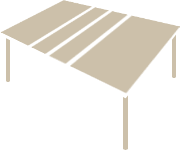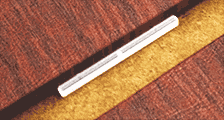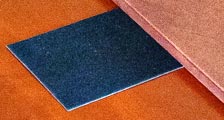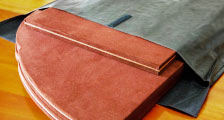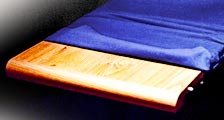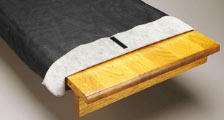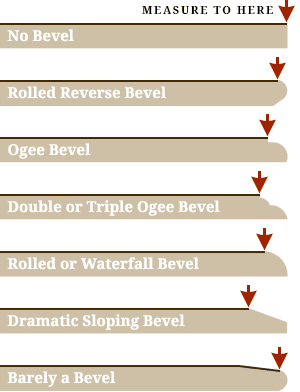Note: the browser you are using is an older version which cannot display this site accurately. For best results, upgrade to a new version of Chrome, Firefox, Safari or Internet Explorer.
Please enable JavaScript in your browser to use this site fully, or call us at 1-800-541-0271.
1Shape
Round
perfect circle
Capsule-
shaped oval
Oval
(egg shaped)
Oval,
scalloped edges
Square
with sharp square corners
Rectangle
with sharp square corners
Square
with rounded corners
Rectangle
with rounded corners
Rectangle
with clipped corners
Rectangle
with concave corners
Rectangle,
arrowhead corners
Rectangle,
scalloped corners
Rectangle
with arched ends
Boat shaped
Octagon
(8 sides) or hexagon (6)
Traditional dropleaf, any shape (leaves drop at ends)
Harvest
dropleaf (leaves run the length)
Refectory
table
(leaves slide into the ends)
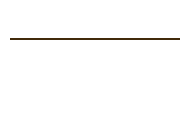
Rectangular buffet, server, or console with square corners
Other shaped buffet, server, or consoleShow All Available Shapes
Choose the shape closest to your table (without leaves)
2Colors
Choose a top color, then scroll down to choose a bottom color
Choose a bottom color
Note: colors viewed on electronic displays can vary.
Choose a top color
Choose a bottom color
4Measurements
Measurements to Take:
Questions? Call us at 1-800-541-0271.
Tip: scroll down for rules for measuring.

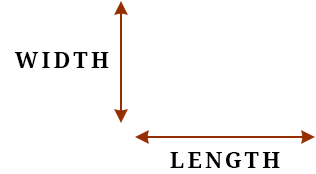
Size of each drop leaf in inches
Center section size

Zero insert leaves—size of each leaf in inches
First leaf
Second leaf
Third leaf
Fourth leaf
Fifth leaf
Sixth leaf
![]() To get a final price for seven or more insert leaves, you must call us at 1-800-541-0271.
To get a final price for seven or more insert leaves, you must call us at 1-800-541-0271.
If you have not called to verify that we have your table model number on file, then you must either determine the radius of one corner by printing and using our Corner Radius Guide (for round-cornered rectangles only), or you can leave the radius blank and make a paper pattern of your table:
What shape do the drop leaves have?
Corner radius from printed guide (optional—for round-cornered rectangles only)
If you have not called to verify that we have your table model number on file, then you must either measure the length of one of the clipped corners by printing and using our Clipped Corner Guide, or you can leave the corner length blank and make a paper pattern of your table:
Corner length (optional)
Add a buffet, server or sideboard?
Rules For Proper Measuring
- Measure using only a flexible metal tape, not cloth or wood: they are not accurate.
- Measure the flat top surface only. Do not include any lip, bevel, rolled or sloping edges. How do I know what to measure?
- Be exact and measure to the closest 1/8ʺ. If the width is 42-1/8ʺ do not round to 42ʺ. Hints for measuring a shaped table
Important: If your table is square or rectangular with rounded corners, a pattern is needed. Remember that rounded corners can have different sizes, from very small like a dime to very large like a basketball rim. Either way, rounded corners require you to make a pattern: choose a new shape, “Rectangle with rounded corners,” and then instructions on “How to Make a Pattern” will appear here.
If your table is perfectly square or rectangular, with sharp square corners, we do not need a pattern. (Think of a shoebox: it has straight sides, straight ends and four sharp square corners.)
80% of tables thought to be round are not true perfect circles. In order to give you the best fit, we would like you to measure the width and length. In our industry we consider the width to be along the split, and the length to be opposite or perpendicular to the split.
If your round table has no split, we would still like you to measure in two directions: pick one direction to be the width (for instance, following the grain) and then the opposite or perpendicular direction is the length.
If the width and length are off by even 1/8ʺ, we want to know. We draw round table pads with a giant compass and we will make this adjustment.
If the width and length are off by more than 1/2ʺ, a pattern is needed. How to make a pattern
Important: If your buffet/dresser is square or rectangular with rounded corners, a pattern is needed. Remember that rounded corners can have different sizes, from very small like a dime to very large like a basketball rim. Either way, rounded corners require you to make a pattern: choose a new shape, “Other shaped” buffet/dresser, and then instructions on “How to Make a Pattern” will appear here.
If your buffet/dresser is perfectly rectangular, with sharp square corners, we do not need a pattern. (Think of a shoebox: it has straight sides, straight ends and four sharp square corners.)
The main objective in making pads for a dropleaf table is to maintain versatility. This means we usually make one pad for each drop leaf, and a separate pad for the center section. On some dropleaf tables, the center section is solid. On others, it separates and opens for insert leaves, so we make a separate pad for each insert leaf.
Important: If your dropleaf table is oval, rectangular with rounded corners, or any other non-rectangular shape, a pattern is needed. Remember that rounded corners can have different sizes, from very small like a dime to very large like a basketball rim. All of these shapes require you to make a pattern as instructed below.
If your dropleaf table and leaves are perfectly rectangular, with sharp square corners, we do not need a pattern. (Think of a shoebox: it has straight sides, straight ends and four sharp square corners.)
Important: If your harvest dropleaf table is square or rectangular with rounded corners, or any other non-rectangular shape, a pattern is needed. Remember that rounded corners can have different sizes, from very small like a dime to very large like a basketball rim. Either way, rounded corners require you to make a pattern as instructed below.
If your harvest table and leaves are perfectly rectangular, with sharp square corners, we do not need a pattern. (Think of a shoebox: it has straight sides, straight ends and four sharp square corners.)
When leaves slide into the ends, they do not usually fit flush. This is because the leaves and the main table have been finished with a bevel on all four sides, creating a “V” or gap that we need to account for. That is why it is important to measure only the flat top surface of each section, and why we ask for the length of the table without leaves above.
Please call us at 1-800-541-0271 so we can do the math and explain how we will accommodate the gap.
We also ask for the size of each leaf if you include leaves in your order: do not assume the leaves are the same.
Important: If your refectory table is square or rectangular with rounded corners, or any other non-rectangular shape, a pattern is needed. Remember that rounded corners can have different sizes, from very small like a dime to very large like a basketball rim. Either way, rounded corners require you to make a pattern as instructed below.
If your refectory table and leaves are perfectly rectangular, with sharp square corners, we do not need a pattern. (Think of a shoebox: it has straight sides, straight ends and four sharp square corners.)
How to Make a Pattern
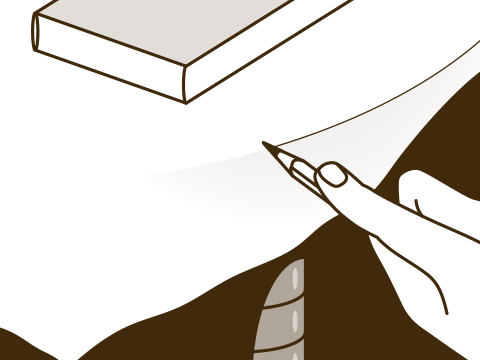 Please follow these directions carefully. The fit of your table pad can only be as nice as your pattern and as accurate as your measurements. Please do not hesitate to call 1-800-541-0271 before getting started if you have any questions.
Please follow these directions carefully. The fit of your table pad can only be as nice as your pattern and as accurate as your measurements. Please do not hesitate to call 1-800-541-0271 before getting started if you have any questions.
- You can use either our pattern paper or wrapping paper (it works perfectly) to make a pattern.
- If you’re using our paper, open it up and flatten it out. Then make sure the straight edge of the paper is perfectly flush with the center split. Or if you’re using wrapping paper, align the nice straight edge of the paper, as it comes off the roll, with the center split of your table.
- Make a pattern of just one half of your table. If your paper does not completely cover half of the table, attach another piece by overlapping it only 1/2ʺ. Use scotch tape along the seam.
- If your table has no center split, we need a pattern of the complete top. For servers or buffets, line up the paper with the back edge.
- Use heavy objects like books to keep the paper from moving.
- Using only a lead pencil, drag or rub the side of the lead against the very top edge of your table’s flat surface only. Tracing tips
- Do not for any reason cut the pattern to get it into the envelope; just fold it again.
 Please follow these directions carefully. The fit of your table pad can only be as nice as your pattern and as accurate as your measurements. Please do not hesitate to call 1-800-541-0271 before getting started if you have any questions.
Please follow these directions carefully. The fit of your table pad can only be as nice as your pattern and as accurate as your measurements. Please do not hesitate to call 1-800-541-0271 before getting started if you have any questions.
- You can use either our pattern paper or wrapping paper (it works perfectly) to make a pattern.
- If you’re using our paper, open it up and flatten it out. Then make sure the straight edge of the paper is perfectly flush with the crack where the drop leaf meets the center. Or if you’re using wrapping paper, align the nice straight edge of the paper, as it comes off the roll, with the crack.
- Make a pattern of just one drop leaf.
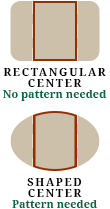 Only make a pattern of the center section if it is not rectangular in shape.
Only make a pattern of the center section if it is not rectangular in shape.- Use heavy objects like books to keep the paper from moving.
- Using only a lead pencil, drag or rub the side of the lead against the very top edge of your table’s flat surface only. Tracing tips
- Do not for any reason cut the pattern to get it into the envelope; just fold it again.
Accessories
1-800-541-0271
Billing Address (If different)
Payment Method
(For Visa, Discover and MasterCard, this is the three digits on the back of the card at the end of the number. For American Express, it is the four digits on the front of the card above the end of the number.)
Mail (along with your pattern, if required) to:
Pioneer Table Pad Company
P.O. Box 40117
Bay Village, OH 44140-0117
Phone 1-800-541-0271 Fax 1-440-930-2558
Copyright © 1987–2020 Pioneer Table Pad Company, All Rights Reserved.
Shipping Address
Mailing Adress
Mail your pattern to:
Pioneer Table Pad Company
P.O. Box 40117
Bay Village, Ohio 44140-0117
How to Order Your Table Pad
To place an order, visit our Order page or call 1-800-541-0271.


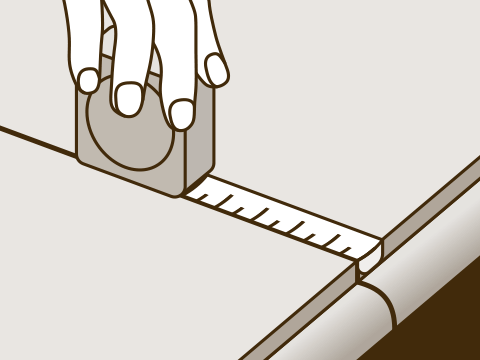 Choose your table shape below to view or
Choose your table shape below to view or 